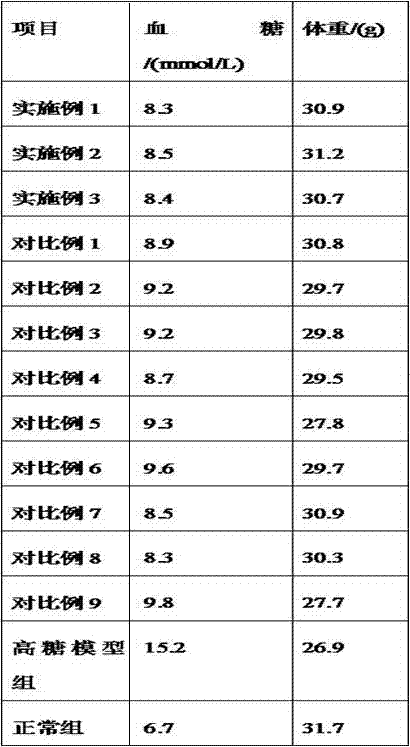Fermentation method of selenium-rich pear residues
A fermentation method and technology of selenium-enriched pears, which are applied in the field of food processing, can solve the problems of low utilization rate of pear dregs, waste, and increase the production cost of selenium-enriched pear beverages, and achieve the goals of enhancing health care functions, increasing economic income, and inhibiting miscellaneous bacteria The effect of growth
- Summary
- Abstract
- Description
- Claims
- Application Information
AI Technical Summary
Problems solved by technology
Method used
Image
Examples
Embodiment 1
[0025] A method for fermenting selenium-enriched pear dregs, comprising the following steps:
[0026] (1) Collection of pear residue: directly collect the pear residue produced each time in a sterilized glass container, add vitamin C solution with 20% weight of pear residue, and sterilize with ultraviolet radiation for 25 minutes to obtain selenium-enriched pear residue;
[0027] (2) Enzymolysis of pear dregs: add purified water 4 times the weight of selenium-enriched pear dregs to selenium-enriched pear dregs, mix well, add mixed enzyme, stir at 42°C for 220 minutes, heat to 80-85°C, Keep warm for 30 minutes to obtain enzymatic pear residue;
[0028] (3) Alcoholic fermentation: add white sugar to the enzymatic pear pomace, the addition amount is 22% of the weight of selenium-enriched pear pomace, stir until completely dissolved, add wine yeast, ferment at 33°C for 10 hours, cool down to 21°C, Ferment at constant temperature for 7 days to obtain alcohol fermented material;
...
Embodiment 2
[0043] A method for fermenting selenium-enriched pear dregs, comprising the following steps:
[0044] (1) Collection of pear residue: directly collect the pear residue produced each time in a sterilized glass container, add vitamin C solution with 23% weight of pear residue, and sterilize with ultraviolet radiation for 25 minutes to obtain selenium-enriched pear residue;
[0045] (2) Enzymolysis of pear dregs: add purified water 4 times the weight of selenium-enriched pear dregs to selenium-enriched pear dregs, mix well, add mixed enzyme, stir at 43°C for 230 minutes, heat to 80-85°C, Keep warm for 30 minutes to obtain enzymatic pear residue;
[0046] (3) Alcoholic fermentation: add white sugar to the enzymatic pear pomace, the addition amount is 23% of the weight of selenium-enriched pear pomace, stir until completely dissolved, add wine yeast, ferment at 34°C for 11 hours, cool down to 22°C, Ferment at constant temperature for 7 days to obtain alcohol fermented material;
[...
Embodiment 3
[0061] A method for fermenting selenium-enriched pear dregs, comprising the following steps:
[0062] (1) Collection of pear residue: directly collect the pear residue produced each time in a sterilized glass container, add vitamin C solution with 25% weight of pear residue, and sterilize with ultraviolet radiation for 30 minutes to obtain selenium-enriched pear residue;
[0063] (2) Enzymolysis of pear dregs: add purified water 5 times the weight of selenium-enriched pear dregs to selenium-enriched pear dregs, mix well, add mixed enzyme, stir at 44°C for 240 minutes, heat to 80-85°C, Keep warm for 35 minutes to obtain enzymatic pear residue;
[0064] (3) Alcoholic fermentation: add white sugar to the enzymatic pear residue, the addition amount is 24% of the weight of selenium-enriched pear residue, stir until completely dissolved, add wine yeast, ferment at 35°C for 12 hours, cool down to 23°C, Ferment at constant temperature for 7-8 days to obtain alcohol fermented material...
PUM
 Login to View More
Login to View More Abstract
Description
Claims
Application Information
 Login to View More
Login to View More - R&D
- Intellectual Property
- Life Sciences
- Materials
- Tech Scout
- Unparalleled Data Quality
- Higher Quality Content
- 60% Fewer Hallucinations
Browse by: Latest US Patents, China's latest patents, Technical Efficacy Thesaurus, Application Domain, Technology Topic, Popular Technical Reports.
© 2025 PatSnap. All rights reserved.Legal|Privacy policy|Modern Slavery Act Transparency Statement|Sitemap|About US| Contact US: help@patsnap.com


